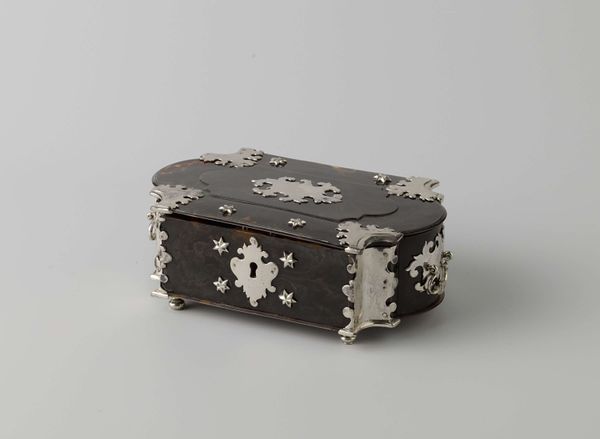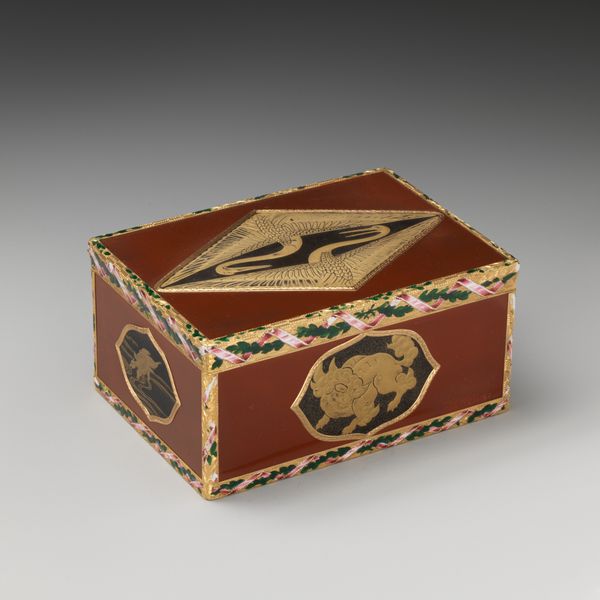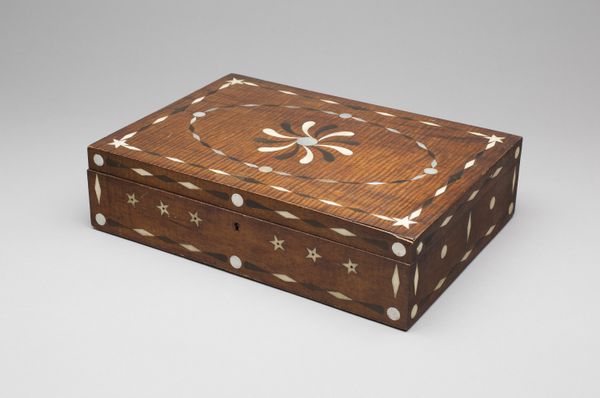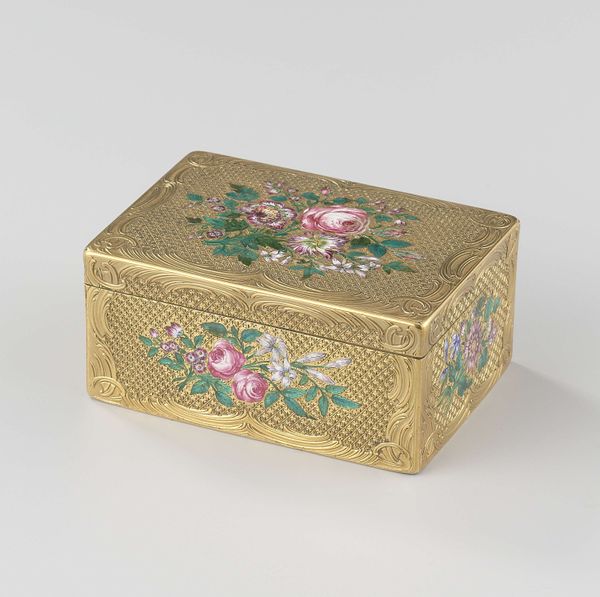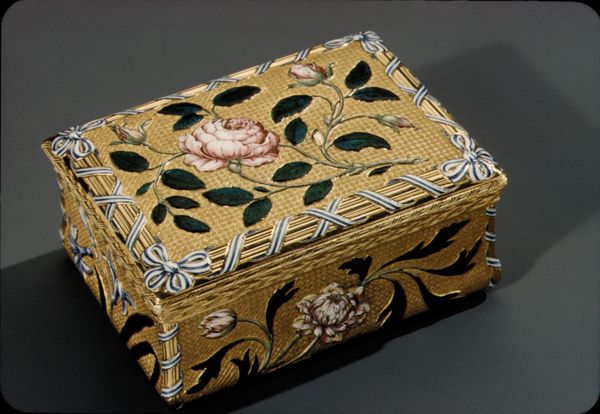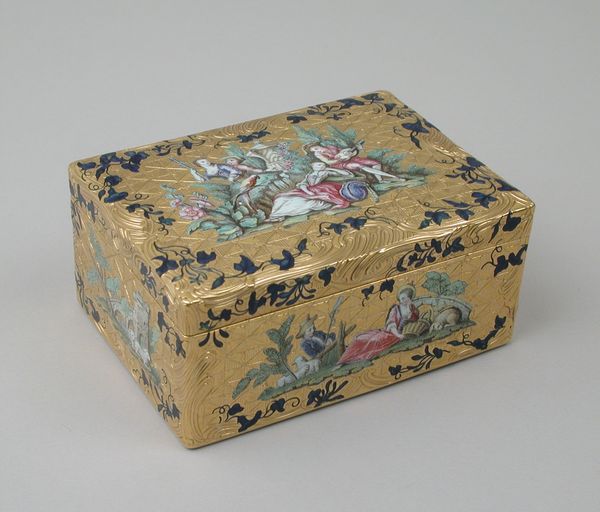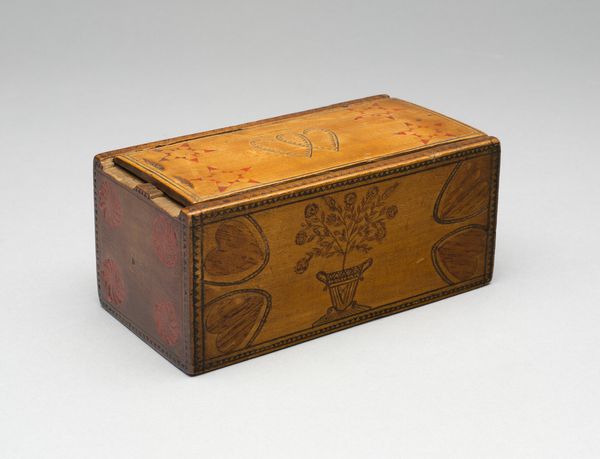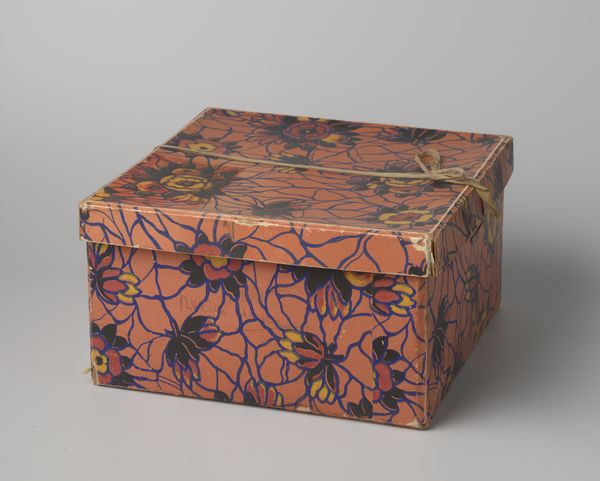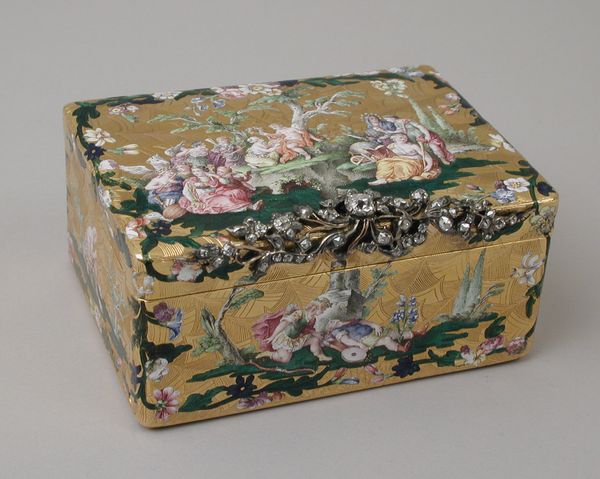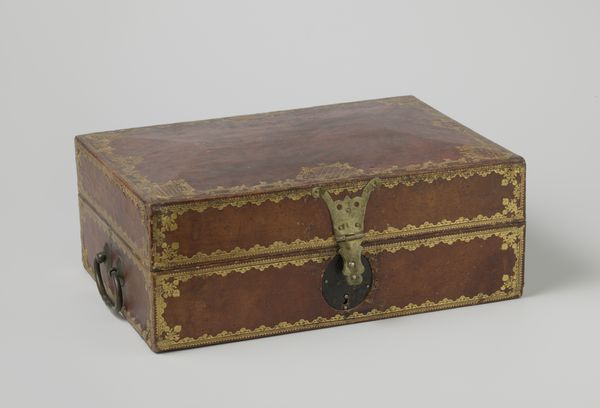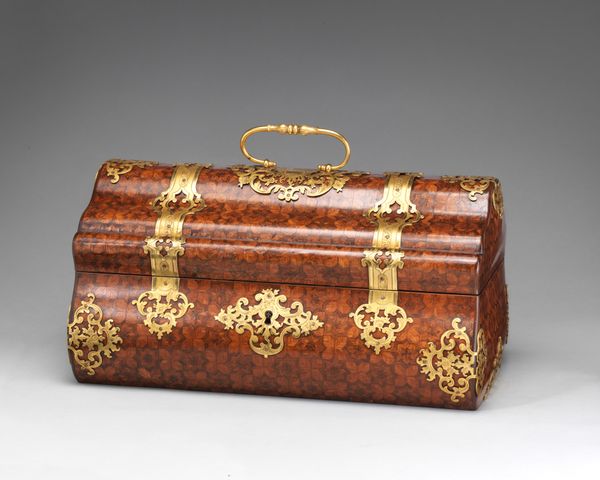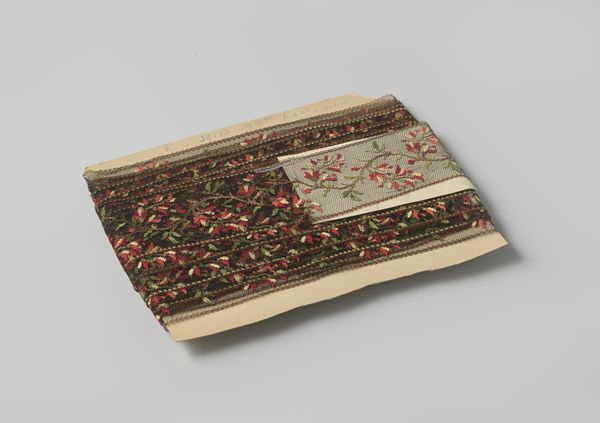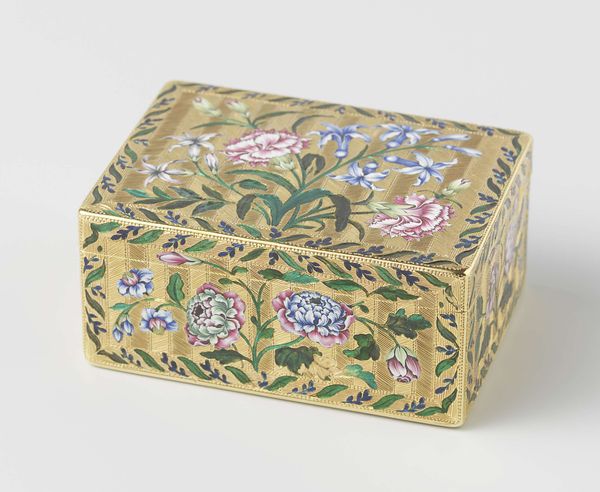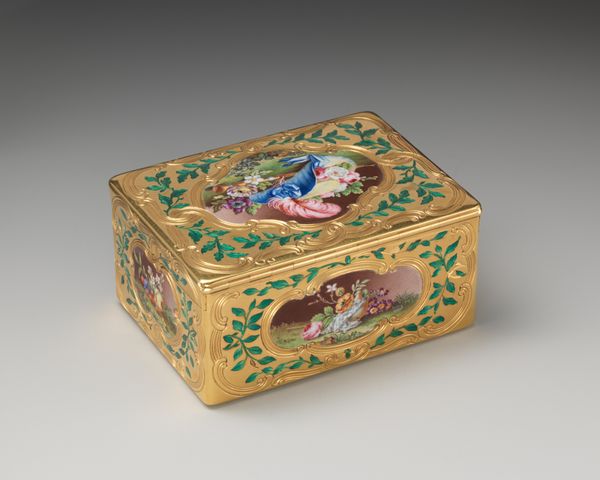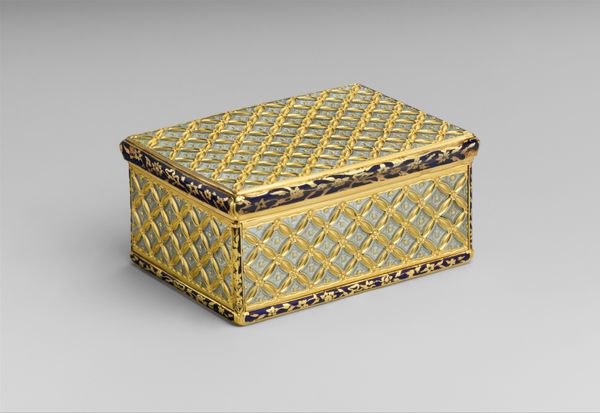
#
geometric
#
decorative-art
#
indigenous-americas
Dimensions: 2 3/8 × 6 1/8 × 6 1/16 in. (6.03 × 15.56 × 15.4 cm)
Copyright: No Known Copyright
Editor: Here we have a covered quillwork birchbark box, made by an Anishinaabe artist, probably in the 20th century. I’m immediately struck by the contrast between the rigid, geometric shape of the box and the delicate, floral designs. What can you tell me about it? Curator: Well, let's think about the process here. Birchbark isn’t just lying around, ready to be used. Harvesting, preparing, and then decorating it with quillwork… it’s all labor, isn't it? This wasn’t just 'art'; it was work. A way of transforming materials from their natural state into something both beautiful and functional. And don’t overlook those plant motifs—they tell a story, right? They speak of the artist’s deep engagement with the natural environment and available raw material, birch. Editor: So, you're saying that this box isn’t just a pretty object, but also a record of the labor and knowledge involved in its creation? It challenges the distinction between 'art' and 'craft?' Curator: Precisely. This challenges the idea that art exists in some separate, rarefied realm. Look at the geometric shapes as well, those x shapes between the flowers, these repetitive, careful details make us consider both individual artistry, cultural pattern and larger systems of knowledge. Who created those materials, who designed and taught these techniques, who would use or purchase the boxes? What do all of those actors tell us about the artwork? Editor: That makes me think about the social context, too. Was this box made for trade, for personal use, or for something else entirely? I wonder about that relationship to an exchange of value. Curator: Exactly! And the materials themselves—bark, quills—these tell a story about resourcefulness, about making use of what’s available. Perhaps its for decoration, but I wonder how such craft becomes trade commodity. What has the journey been, and where do things travel to and from? It makes me rethink value, doesn’t it? Editor: I never thought about decorative art being connected to broader consumption, cultural labor and materiality in that way. Thanks for bringing this perspective to light. Curator: Absolutely! Thinking about art as more than just aesthetics, but as part of larger economic and social systems really opens up our understanding, doesn't it?
Comments
minneapolisinstituteofart almost 2 years ago
⋮
Created by Anishinaabe and Inuit fiber artists, this collection showcases the creativity and skill of Native women artists who transform indigenous materials gathered from their homelands into works of art. The technical mastery and ingenuity of these artist appears in the ability to utilize porcupine quills, birchbark, and locally-harvested plant materials to create intricately adorned and finely woven baskets. For more than two centuries, Native women created a market for birchbark containers and baskets to sustain their families during a time of major cultural shifts and external pressures.
Join the conversation
Join millions of artists and users on Artera today and experience the ultimate creative platform.
